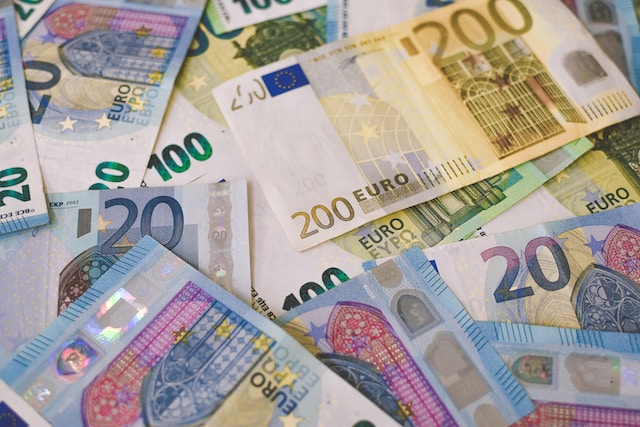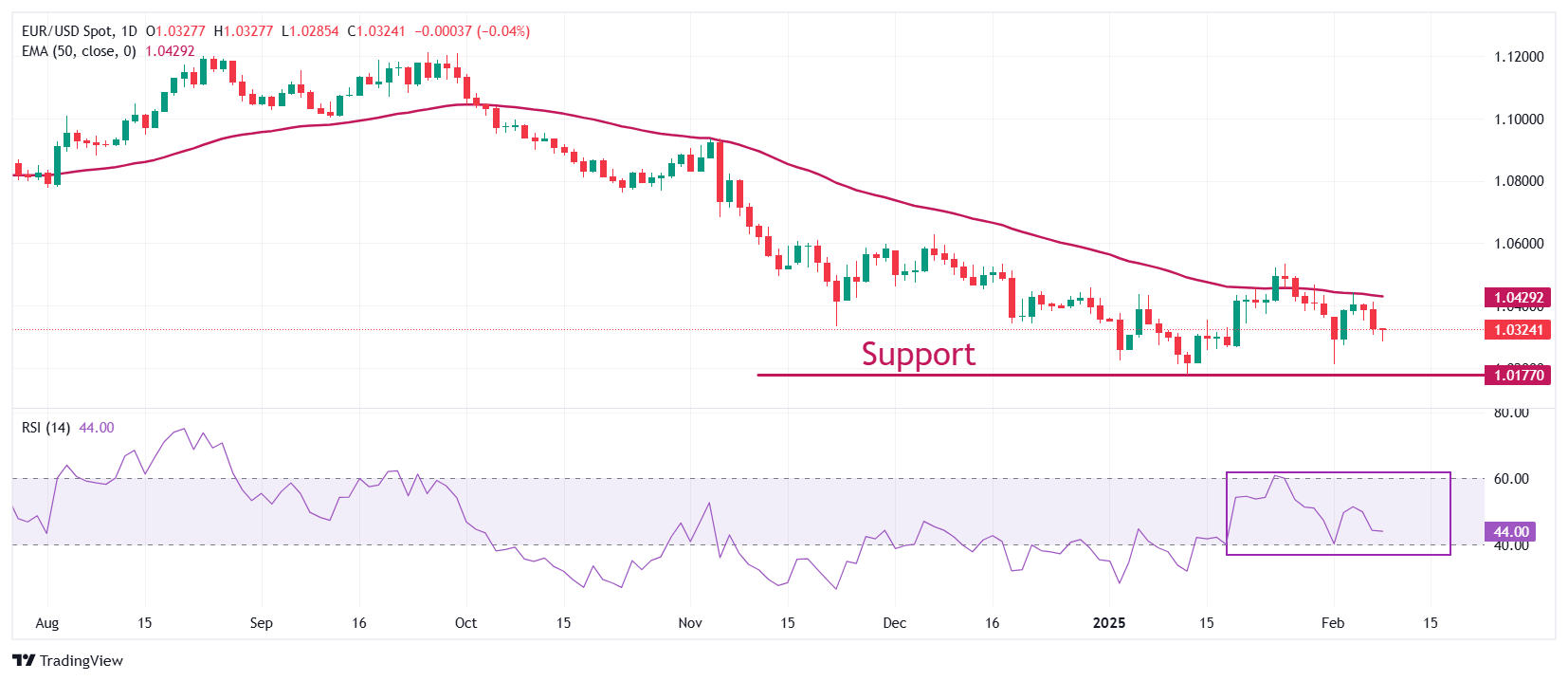
EUR/USD recovers intraday losses and rebounds above 1.0300, but renewed fears of US President Trump’s tariffs keep the outlook uncertain.
US President Trump is poised to impose 25% tariffs on all aluminum and steel imports.
Investors await ECB Lagarde’s speech on Monday and Fed Powell’s testimony on Tuesday and Wednesday.
EUR/USD recovers above 1.0300 in Monday’s European session after a weak opening around 1.0280. The major currency opened on a weak note as investors rushed to the safe-haven fleet on renewed United States (US) President Donald Trump’s tariff fears. The US Dollar Index (DXY), which tracks the Greenback’s value against six major currencies, gives up some of its intraday gains but is still 0.15% higher, around 108.25.
Over the weekend, President Trump threatened to raise 25% tariffs on imports of steel and aluminum, as well as reciprocal tariffs on those nations where he saw unfair trade practices. The biggest casualty of Trump’s decision of 25% tariffs on metals is expected to be Canada, the largest exporter of aluminum to the US. The pressure of higher levies on metals will also be borne by Mexico, Brazil, Vietnam, and South Korea, leading exporters to the US.
The impact of reciprocal tariffs is expected to be lethal on the Eurozone, which charges 10% tariffs on automobile imports from the US and pays 2.5% import duty for domestic autos supplied to it. Such a scenario will be unfavorable for the Euro (EUR), which is already vulnerable due to growing economic contraction risks and inflation undershooting the European Central Bank’s (ECB) target of 2%.
Last week, analysts at Macquarie warned that a US tariff bomb would likely find “fertile ground in the EU,” escalating unresolved issues rapidly into trade tensions, given that “Europe is target-rich”.
The ECB is about to continue reducing interest rates, and a few policymakers have also warned that the central bank might need to go below the neutral rate as the Eurozone economy is not strong enough to support inflation at 2%.
Economists at the ECB have predicted that the bank's so-called neutral rate will probably be between 1.75% and 2.25%.
In Monday’s session, investors will focus on ECB President Christine Lagarde’s speech at the European Parliament at 14:00 GMT. Lagarde will participate in the plenary debate on ECB Annual Report 2023.
Daily digest market movers: EUR/USD faces pressure as USD’s safe-haven appeal increases
In addition to dismal market sentiment, the US Dollar’s (USD) outperformance is also driven by growing expectations that the Federal Reserve (Fed) will keep interest rates in the current range of 4.25%-4.50% for the entire year.
Strategists at Macquarie said, "Our updated view is for no change in the fed funds rate during 2025, with it likely to remain in the 4.25 to 4.5% range. Previously we had suggested there would be just one further 25 bps cut in either March or May." Analysts have revised their expectations for the Fed’s monetary policy outlook after the release of the upbeat US Nonfarm Payrolls (NFP) report for January.
The US NFP report showed that the economy added 143K jobs in January, fewer than 307K in December, which were revised higher from 256K. Analysts at Macquarie argued that upward revisions to recent payroll months point to an even "steeper trend acceleration".
Meanwhile, the Unemployment Rate decreased to 4% from the estimates and the prior release of 4.1%. Average Hourly Earnings surprisingly accelerated to 4.1% on the year and rose at a robust pace of 0.5% on the month.
This week, the major trigger for the US Dollar will be the Consumer Price Index (CPI) data for January, which will be released on Wednesday. Investors will also pay close attention to Fed Chair Jerome Powell’s testimony before the Congress on Tuesday and Wednesday.
Technical Analysis: EUR/USD struggles around 1.0300
EUR/USD stays under pressure at around 1.0300 in European trading hours on Monday. The major currency pair declined after facing pressure near the 50-day Exponential Moving Average (EMA) around 1.0436 last week, suggesting that the overall trend is still bearish.
The 14-day Relative Strength Index (RSI) oscillates in the 40.00-60.00 range, indicating a short-term sideways trend.
Looking down, the January 13 low of 1.0177 and the round-level support of 1.0100 will act as major support zones for the pair. Conversely, the psychological resistance of 1.0500 will be the key barrier for the Euro bulls.
* The content presented above, whether from a third party or not, is considered as general advice only. This article should not be construed as containing investment advice, investment recommendations, an offer of or solicitation for any transactions in financial instruments.



